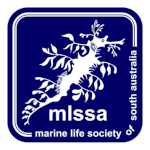Vic Neverauskas from the Department of Fisheries was our guest speaker at our November General Meeting. Vic is the Scientific & Development Co-ordinator for Fisheries. His topic was the impact and monitoring of the Spencer Gulf oil spill. He told us how the spill occurred and how it reached the Port Pirie mangroves. He told us that the oil spill occurred during 40-50 knot southwesterly winds when a tug missed a push-point (double-skin) on the tanker. The tug hit a single-skin point where there was a full tank of oil. Another oil tank was completely empty.
The full tank was punctured and started leaking, spilling its contents into the sea. This all happened at 10.30am on Sunday 30th August, 1992. Dispersant was first used on the oil spill two hours later. A boom could not be deployed because of the strong winds. A dispersant bucket for use with a helicopter would not work. A tug with dispersant on board had to be sent from Whyalla. On the Monday the winds were NNE and the oil was sprayed by a plane, 24 hours after the incident. Vic drew a detailed map and showed us how the oil spill eventualy went over Cockle Spit towards First and Second Creeks at Port Pirie.
The oil could not be skimmed because there was nowhere to put it afterwards. Sixth Creek became the worst effected area of the mangroves. Vic told us that Northern Spencer Gulf is a “tight system”. He said that the 10-20 tonnes of oil that beached was a “small spill” and that damage to the area was restricted. Just after the spill reached the area, there were no fish or birds in Sixth Creek.
He thought that the seagrass communities were normal. Two months later, the mangroves were starting to get back to normal, with fish etc returning to the area. Vic said that bioremediation methods were possibly risky. It would probably take 12 to 18 months for the mangroves to be good again and for the trees to be alright. He was not too concerned about the damage to the area. He likened an oil spill to a bushfire.
Vic sits on the National Plan to Combat Pollution by Oil Committee. He has many years experience in environmental studies. He has worked for CSIRO around Port Pirie and studied seagrass degradation for the E&WS before working for Fisheries. He told us that Santos were paying for the clean-up of the spill and they donated $5,000 towards monitoring its impact. They would also renew their contingency plans. We were able to ask Vic several questions before he left. Our president thanked Vic for his talk, which he considered to be the best he had ever heard at our meetings.

